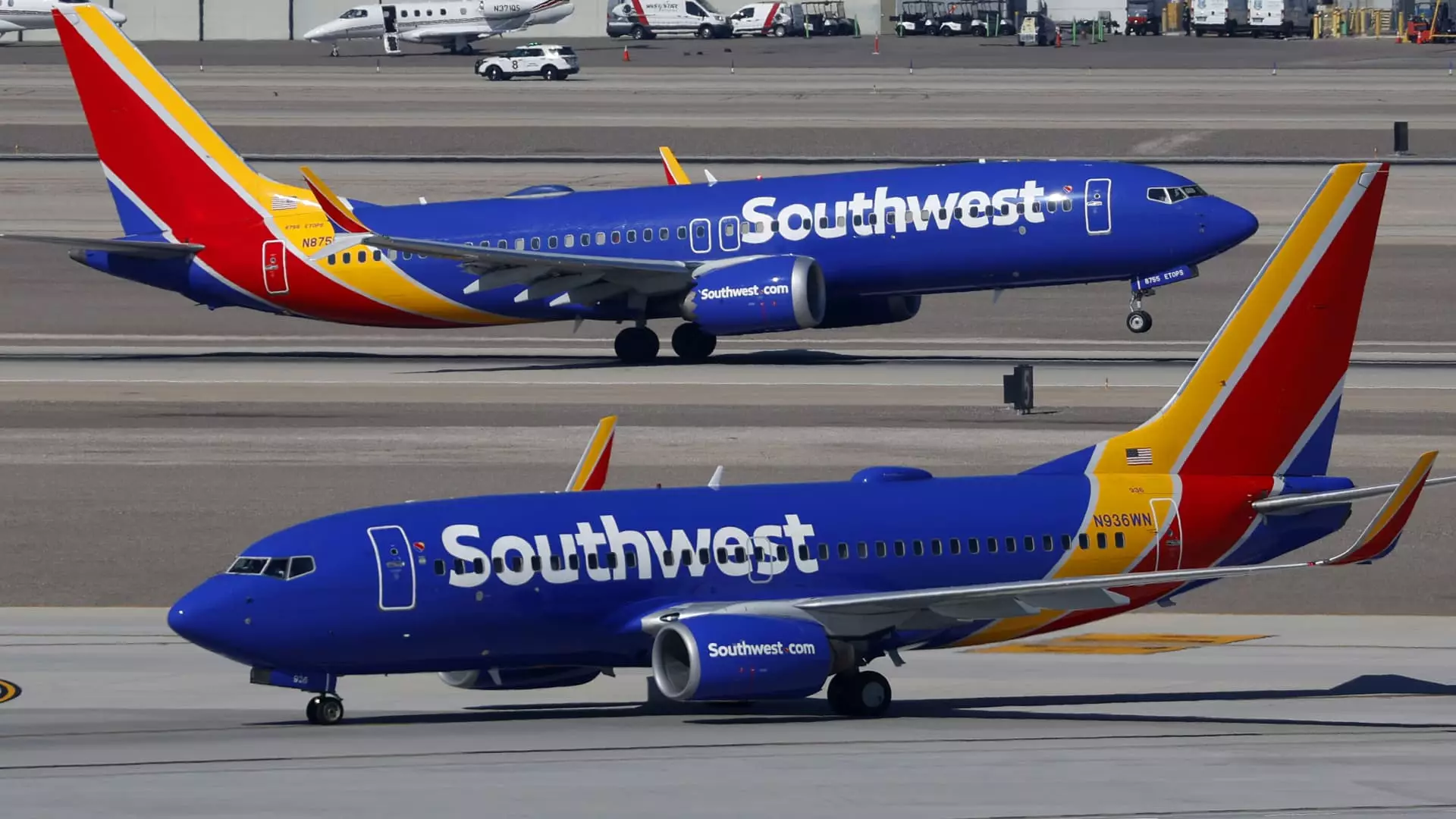For over five decades, Southwest Airlines cultivated a reputation grounded in freedom and simplicity. Its open seating policy allowed passengers the luxury of choosing their seats moment by moment, transforming the flying experience into a more relaxed and customer-centric affair. This policy was a defining feature that set Southwest apart from its more rigid competitors. Now, that legacy faces a critical transformation—an overhaul driven by the pressing need to stay financially competitive in an increasingly profit-hungry airline industry. The airline’s decision to implement assigned seating from January 27 signals not just a change in policy, but a fundamental shift in its identity, risking alienating loyal travelers who cherished the airline’s original charm.
The move away from free, open seating underscores Southwest’s struggle to generate new revenue streams, a necessity spurred by their broader strategic shifts. For years, their offering of two free checked bags complemented their open seating and fostered a perception of value and simplicity. Both these policies—once regarded as customer-centric perks—are now dropping away in pursuit of maximizing profit margins. This shift, while rationalized as necessary for future growth, epitomizes the broader trend of airlines prioritizing short-term gains over customer loyalty and the culture that their brand built.
Strategic Rebranding for Profitability—At What Cost?
Southwest’s planned reconfiguration of its boarding process and pricing models reflects an industry-wide pivot toward ancillary revenue. By introducing assigned seats, Southwest aims to streamline operations—reducing boarding chaos, optimizing turnaround times, and increasing the sale of premium seating options. However, this comes at a social cost: the cherished sense of spontaneity and community on board is sacrificed on the altar of efficiency and profitability. Loyal customers who once relished the unpredictability of open seating now face a more regimented process where seat selection is dictated by fare class, frequent flyer status, or extra fees.
This strategic overhaul might boost immediate revenue, but it risks fracturing the airline’s emotional connection with its core customers. The emphasis on tier-based boarding and seat selection incentivizes higher spending but also commodifies the flying experience, turning a once simple journey into a marketplace of choices—and potential frustrations—over perceived value. For some travelers, this diminishment of a personal, relaxed boarding process could be a fatal blow to Southwest’s brand identity—particularly among those who valued its reputation as the airline that ‘does things differently.’
The Dilemma of Equity versus Efficiency
While the airline insists that its new policies are designed to enhance operational efficiency without compromising customer care, the reality feels more complicated. The shift from a free-for-all open seating model to a tiered boarding process—prioritizing elite flyers and high-paying customers—underscores a growing disparity in service levels. The flight experience, once spontaneous and egalitarian, now appears to be veering toward a class-stratified service model, similar to the traditional legacy carriers.
The decision to sell seat assignments, with prices varying by demand and route, further emphasizes this stratification, potentially discouraging an adventurous, budget-friendly spirit that Southwest fostered. While it might make economic sense, it also risks alienating budget-conscious travelers who appreciated the airline’s simplicity and fairness. This could lead to a betrayal of Southwest’s original promise: offering straightforward, affordable travel. Instead, it’s morphing into a more complex, revenue-focused enterprise that rewards those willing to pay more—just like its more established rivals.
Can Southwest Maintain Its Soul Amidst Expansion?
The challenge for Southwest now is balancing its need for financial growth with its longstanding reputation for customer loyalty and egalitarian service. As it reconfigures itself to stay profitable, the airline must confront whether it can preserve the trust and goodwill of its core base or if it is incurring a scenario where tradition is sacrificed on the altar of the bottom line. The shift to assigned seating and the introduction of ancillary fees reflect a painful, but arguably inevitable, transition in the airline industry. Yet the question remains whether Southwest’s brand integrity can survive this transformation intact.
The manner in which Southwest approaches this delicate balancing act will serve as a benchmark for the industry—either as a cautionary tale of losing sight of customer-centric values or as a masterclass in evolving with the market without relinquishing one’s soul. For now, loyal travelers will watch with a mix of nostalgia and trepidation, knowing that the airline they admired for its spirit of independence is now navigating the turbulent waters of profit-driven change.

